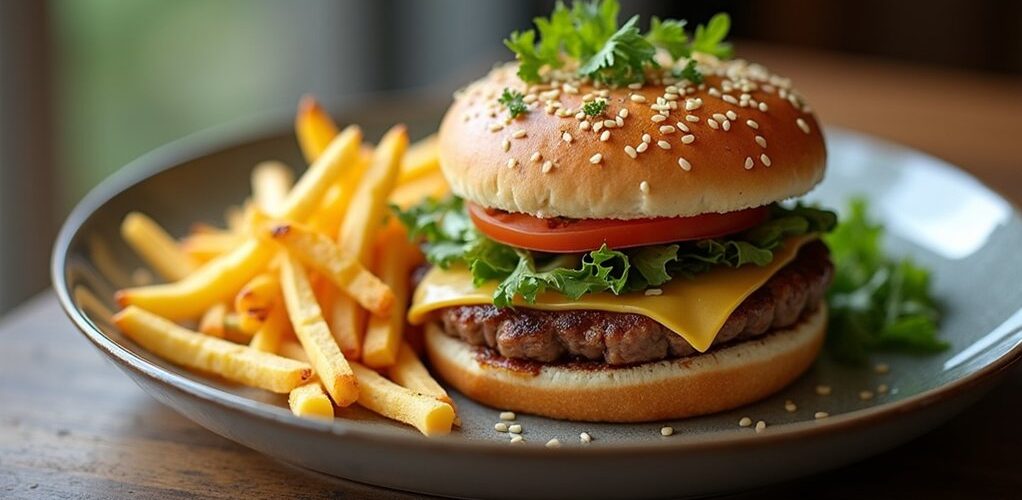
Rice presents significant challenges for those following a low-carb diet, with one cup of white rice containing 44.6 grams of net carbs, potentially exceeding a full day's carbohydrate allowance. While brown and basmati varieties offer minimal differences in carb content, several alternatives exist, including cauliflower rice at just 1.81 grams of net carbs per serving. Understanding portion control and exploring vegetable-based substitutes can help maintain a low-carb lifestyle while satisfying rice cravings. Further exploration reveals numerous creative ways to adapt favorite rice-based dishes.
Key Takeaways
- Traditional rice is generally unsuitable for low-carb diets, with one cup containing 44-48 grams of net carbs.
- Rice alternatives like cauliflower rice (1.81g net carbs/100g) provide similar texture with significantly fewer carbohydrates.
- You can mix regular rice with cauliflower rice in varying ratios to gradually reduce carb intake.
- Portion control is essential – limit rice to 1/4 cup uncooked if including it occasionally in your low-carb diet.
- Consider other rice substitutes like shirataki rice (1g net carbs/3oz) or zucchini rice (3.04g net carbs/cup).
Understanding Rice and Its Carbohydrate Content
Rice, a dietary staple for billions worldwide, presents a considerable challenge for those following a low-carbohydrate lifestyle due to its substantial carbohydrate content.
Different varieties of cooked rice contain remarkably similar amounts of net carbs, with white rice providing 44.6 grams per cup, brown rice containing 48.47 grams, and basmati rice offering 45.3 grams. These high carbohydrate levels make rice generally incompatible with low-carb diets.
Despite their differences, white, brown, and basmati rice all pack roughly 45 grams of carbs per cup, making them unsuitable for low-carb diets.
The starch content in rice can cause notable increases in blood sugar levels, making it particularly problematic for individuals managing their carbohydrate intake.
For those committed to maintaining a low-carb eating plan, alternatives such as cauliflower rice and broccoli rice offer considerably lower carbohydrate content while providing similar versatility in meal preparation.
The Impact of Rice on Low-Carb Goals
Rice's substantial carbohydrate content presents a significant challenge for individuals following low-carb diets, with a single cup of cooked white rice containing enough carbs to potentially exceed an entire day's allowance. The rapid blood sugar spikes caused by rice's high starch content can disrupt metabolic goals and create obstacles for those managing their carbohydrate intake carefully. Additionally, refined carbohydrates such as white rice convert swiftly to glucose, disrupting ketosis for those on a keto diet. Fortunately, alternatives like cauliflower rice offer comparable versatility with dramatically reduced carb content, making them practical substitutions for maintaining low-carb dietary objectives.
Rice's Carbohydrate Content Analysis
Understanding the carbohydrate content in different varieties of rice reveals significant challenges for those following a low-carb eating plan. Both white and brown rice contain substantial amounts of carbs that can quickly consume daily carbohydrate allowances, with brown rice slightly higher at 48.5 grams per cup compared to white rice's 44.6 grams.
- White rice's high starch content (80-90%) leads to rapid blood sugar elevation.
- Brown rice, despite its nutritional benefits, contains more net carbs than white rice.
- Cauliflower rice serves as an excellent low-carb substitute, with only 1.81g net carbs per 100g.
- When including rice in low-carb diets, moderation and proper food pairing become essential strategies.
For those committed to low-carb diets, understanding these numbers helps make informed decisions about rice consumption and appropriate substitutes.
Hidden Risks of Rice
While analyzing the carbohydrate content of rice provides valuable baseline information, several hidden challenges emerge when incorporating this grain into a low-carb lifestyle.
One cup of cooked rice, whether white or brown, contains approximately 45 grams of net carbs, which can quickly derail low carb diet goals. This substantial carb intake poses a particular risk for those attempting to maintain ketosis, as it exceeds the recommended daily limit of 20-50 grams of carbohydrates.
Additionally, rice's high starch content triggers rapid blood sugar levels fluctuations, compromising blood sugar management efforts. Without careful portion control, consuming rice can inadvertently sabotage weight loss objectives and health targets on a low-carb eating plan, making it a challenging food choice for those committed to carbohydrate restriction.
Making Smart Rice Substitutions
Making smart substitutions for rice plays an essential role in maintaining low-carb dietary goals while preserving familiar meal experiences.
When adopting low carb eating habits, understanding effective rice alternatives becomes fundamental for sustainable dietary success.
- Cauliflower rice stands out as a versatile option, containing just 1.81 grams of net carbs per 100-gram serving.
- Shirataki rice offers an even lower carbohydrate intake at only 1 gram per serving.
- Non-starchy vegetables like zucchini and broccoli provide nutrient-dense alternatives while keeping carbs minimal.
- Portion control remains vital when occasionally consuming traditional rice, requiring careful balance with protein and healthy fats.
These strategic substitutions enable individuals to maintain their low-carb lifestyle without sacrificing the satisfying experience of rice-based dishes.
White Vs Brown Rice: Comparing the Numbers
While both white and brown rice contain considerable amounts of carbohydrates, with 44.6 and 48.47 grams per cup respectively, their nutritional profiles show notable differences.
Brown rice offers more fiber at 3.23 grams per cup compared to white rice's minimal fiber content of less than 1 gram, yet this difference does not substantially reduce its overall carbohydrate impact.
Despite brown rice's higher nutrient density, both varieties remain challenging options for those following low-carb dietary protocols, as their starch content can considerably affect blood sugar levels.
Carb Content Breakdown Numbers
A detailed carbohydrate comparison between white and brown rice reveals significant differences in their nutritional profiles. Understanding these variations is essential for those following a low-carb diet or seeking a rice alternative with fewer grams of net carbs.
- White rice contains 44.6 grams of carbohydrates per cooked cup, with minimal fat content and high starch levels reaching 80-90%.
- Brown rice provides 48.47 grams of net carbs per cooked cup, plus 3.23 grams of fiber.
- Both varieties are high in carbs and can cause significant blood sugar spikes.
- Cauliflower rice offers a low-carb alternative with only 1.81 grams of net carbs per 100-gram serving.
For those committed to low-carb recipes or managing blood sugar levels, these numbers demonstrate why traditional rice varieties may need to be limited or replaced.
Nutrient Density Comparison
The nutrient profiles of white and brown rice reveal notable differences beyond their carbohydrate content, painting a detailed picture of their nutritional value.
While both rice are high in total carbohydrate intake, brown rice offers greater nutrient density with 3.23 grams of fiber compared to white rice's 0.63 grams, which can help reduce net carbs.
Brown rice contains 248 calories and 48.47 grams of carbs per cup, alongside 1.96 grams of fat, while white rice provides 205 calories and 44.6 grams of carbs, with less than 1 gram of fat.
Despite brown rice's superior fiber content, both varieties remain challenging options for low-carb and ketogenic diets, as they are fundamentally high in carbohydrates compared to other dietary alternatives.
Healthy Rice Alternatives for Low-Carb Dieters
Individuals following low-carb diets can find satisfying alternatives to traditional rice through several vegetable-based options that greatly reduce carbohydrate intake while maintaining meal satisfaction.
These healthy rice alternatives offer varying levels of nutrients and carbohydrate content to accommodate different dietary needs.
- Cauliflower rice leads the pack with just 1.81 grams of net carbs per 100-gram serving.
- Broccoli rice provides even fewer carbs at 1 gram per 85-gram portion, plus added fiber.
- Shirataki rice, derived from konjac root, contains only 1 gram of net carbs per 3-ounce serving.
- Zucchini rice and rutabaga rice round out the options, with 3.04 and 8.9 grams of net carbs per cup respectively.
Each alternative can be easily incorporated into existing recipes, making the shift to a low-carb lifestyle more manageable. Including non-starchy vegetables like cauliflower and broccoli in your low-carb meals can support nutrient intake without disrupting low-carb goals.
Making Cauliflower Rice: A Step-by-Step Guide
Creating perfect cauliflower rice requires careful attention to preparation and technique, making it an essential skill for low-carb cooking enthusiasts. The process begins with preparing fresh cauliflower by removing leaves and stem, then breaking it into manageable florets for processing. For those seeking a low-carb substitute for traditional rice, cauliflower rice offers an excellent alternative with only 1.81g net carbs per 100g serving. The versatile ingredient can be prepared using either a food processor, pulsing until rice-sized pieces form, or by hand with a box grater. Once processed, sauté the cauliflower rice until tender while maintaining its grainy texture. Incorporating leafy greens alongside cauliflower rice can enhance the nutritional profile of a low-carb meal.
| Step | Method | Time |
|---|---|---|
| Prep | Remove leaves, cut florets | 5 min |
| Process | Food processor or grater | 3-5 min |
| Cook | Sauté with olive oil | 5-7 min |
Smart Portion Control Strategies for Rice Lovers
Measuring rice portions before cooking helps establish accurate serving sizes, with experts recommending 1/4 cup uncooked rice per serving for those monitoring carbohydrate intake.
Rice lovers can extend their portions while maintaining lower carb counts by mixing regular rice with cauliflower rice in varying ratios, starting with a 50-50 split and adjusting to personal preference.
This blending technique not only increases serving size but also adds nutritional benefits, as cauliflower rice contains essential vitamins and minerals while keeping net carbs minimal.
Measure Rice Before Cooking
Three key principles of successful rice portion control begin with accurate measurement before cooking.
Managing carbohydrate intake effectively requires precise measurement of uncooked rice, using tools like food scales to align portions with daily low-carb goals.
- Weigh rice in its uncooked state to calculate exact carbohydrate content per serving.
- Portion uncooked rice according to meal plans, considering that one cup cooked contains 44.6g carbs.
- Prepare rice in bulk quantities, then divide into pre-measured portions for convenience.
- Combine measured rice with non-starchy vegetables to reduce carb density per serving.
Mix With Cauliflower Rice
Beyond precise measurements, rice lovers can especially reduce their carbohydrate intake by incorporating cauliflower rice into their meals. This healthy alternative allows individuals to eat their favorite rice-based dishes while maintaining a balanced low-carb diet. By replacing half of the regular rice portion with cauliflower rice, people can manage portion sizes effectively and still enjoy satisfying meal volumes.
| Strategy | Carb Reduction | Benefits |
|---|---|---|
| 25% Substitution | Moderate | Easier Shift |
| 50% Substitution | Significant | Best Balance |
| 75% Substitution | Maximum | Highest Nutrition |
| Full Replacement | Complete | Lowest Carbs |
The versatility of cauliflower rice makes it an excellent choice for stir-fries and casseroles, providing familiar textures while supporting low carbohydrate dietary goals. This approach not only reduces carbohydrate intake but also increases the nutritional value of meals through added fiber and nutrients.
Balancing Rice With Other Low-Carb Foods
Successfully incorporating rice into a low-carb diet requires strategic meal planning and careful attention to portion sizes.
When balancing rice with other low-carb foods, focus on creating well-rounded meals that minimize carbohydrate impact while maintaining satisfaction and nutrition.
- Keep rice portions under 1/2 cup and pair with high-protein foods like chicken or fish to create balanced, filling meals.
- Add non-starchy vegetables such as broccoli or spinach to increase fiber content and reduce the meal's overall glycemic load.
- Choose whole grain rice varieties over white rice to benefit from additional nutrients and fiber.
- Consider mixing traditional rice with cauliflower rice to maintain the familiar texture while reducing total carbohydrate content.
- For a successful keto diet, aim to reduce carbohydrate intake significantly, focusing instead on high-quality fats and proteins to achieve ketosis.
Rice Substitutes That Actually Taste Good
While traditional rice may be a staple for many, the growing availability of tasty low-carb alternatives has revolutionized how people approach grain substitutes in their meals. Among these rice substitutes, cauliflower rice stands out with just 1.81 grams of net carbs per 100-gram serving, while broccoli rice offers even fewer carbs at 1 gram per 85-gram portion. For those seeking variety, zucchini rice provides moisture and texture with only 3.04 grams of net carbs per cooked cup. Shirataki rice, made from konjac root, emerges as an extremely low-carb option with merely 1 gram of net carbs per serving. Those looking to diversify their options can try rutabaga rice, which contains 8.9 grams of net carbs per cooked cup while adding a distinct flavor profile to meals. Additionally, vegetable-based pasta alternatives like zucchini noodles and spaghetti squash offer low-carb, vitamin-rich options for those seeking to reduce their carbohydrate intake while maintaining flavorful meals.
Tips for Transitioning Away From Rice
Making the switch from traditional rice to low-carb alternatives requires a thoughtful, gradual approach to guarantee lasting dietary changes. Success relies on implementing replacement tips that help maintain satisfaction while reducing carbohydrate intake. When incorporating rice alternatives like cauliflower rice, focus on creating sustainable habits that support long-term dietary goals.
- Begin by replacing half of regular rice portions with fiber vegetables or cauliflower rice.
- Experiment with different seasonings and spices to enhance the flavor of low-carb substitutes.
- Track daily carbohydrate intake while gradually decreasing rice consumption.
- Incorporate a variety of vegetable-based alternatives to prevent meal fatigue and maintain interest.
For a more balanced diet, include non-starchy vegetables like spinach and kale, which are nutrient-dense and low in carbs.
These systematic changes help facilitate a smoother adjustment while maintaining nutritional balance and satisfaction throughout the dietary adjustment process.
Recipe Ideas for Rice-Free Meals
Rice-free meal preparation opens up a world of creative culinary possibilities for those following a low-carb lifestyle. Innovative recipe ideas include transforming cauliflower rice into flavorful stir-fries, while broccoli rice serves as an excellent base for grain bowls, each containing less than 2 grams of net carbs per serving.
Discover endless low-carb possibilities with rice alternatives like cauliflower and broccoli, perfect for creating delicious meals under 2 net carbs.
For those missing pasta dishes, zucchini noodles provide a satisfying alternative with only 3 grams of net carbs, perfect for traditional Italian-inspired meals.
Mushroom rice offers a rich, earthy flavor profile ideal for hearty side dishes, while shirataki rice excels in Asian-inspired recipes and soups.
These versatile alternatives can be seasoned and prepared similarly to traditional rice, making them practical options for maintaining a low-carb diet without sacrificing taste or meal variety. Additionally, creamy vegetable soups can serve as a delicious complement to rice-free meals, providing rich flavors and maintaining low carb content.
Frequently Asked Questions
Can I Still Eat Rice in a Low-Carb Diet?
While rice alternatives are recommended, limited rice consumption is possible through careful carb counting and portion control. Meal planning with high-fiber recipes helps manage blood sugar levels on a low-carb diet.
What Is the Number One Carb to Avoid?
Sugar stands as the primary carb source to avoid, impacting glycemic index considerably. Focus on healthy alternatives and portion control through careful meal planning, incorporating low carb recipes and smarter snack options.
Which Type of Rice Has the Lowest Carbs?
Cauliflower rice has the lowest carb content among all rice varieties, including brown, white, wild, black, jasmine, and basmati rice, containing only 1.81 grams of net carbs per 100-gram serving.
What's the Worst Carb for Belly Fat?
Refined sugars from sodas and processed snacks rank as the worst carb sources for belly fat accumulation. Making healthy swaps and focusing on whole-grain nutrition tips can support metabolism boosters and weight loss.
Conclusion
While rice poses challenges for those following a low-carb diet, multiple alternatives and strategies exist for managing rice consumption while maintaining dietary goals. Through mindful portion control, choosing lower-carb varieties, or opting for substitutes like cauliflower rice, individuals can satisfy their rice cravings without compromising their nutritional plans. Understanding these options empowers people to make informed choices that align with their health objectives while enjoying satisfying meals.
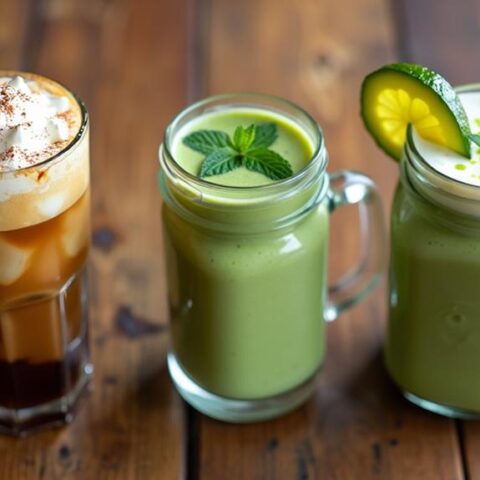

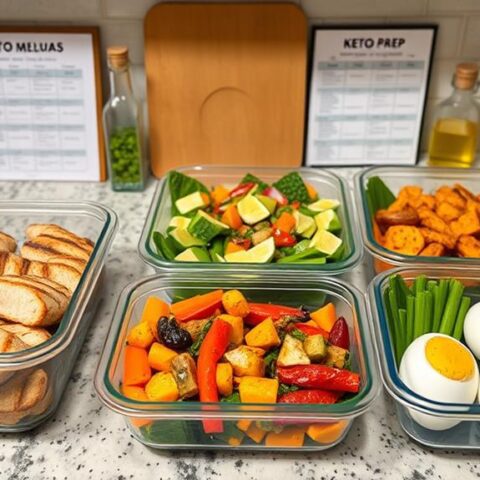
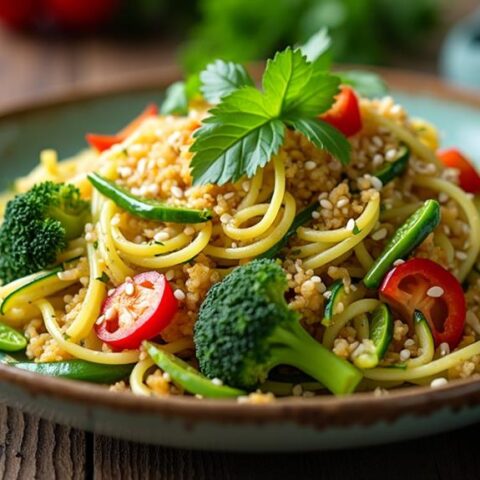


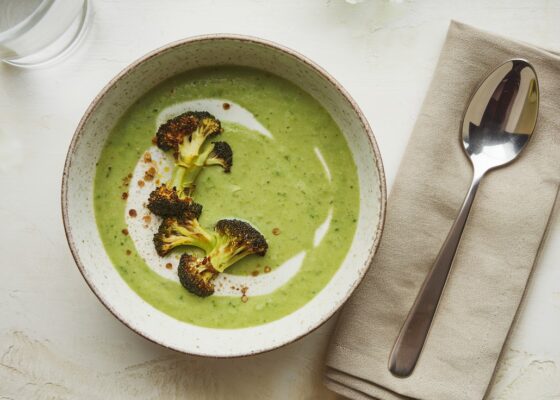

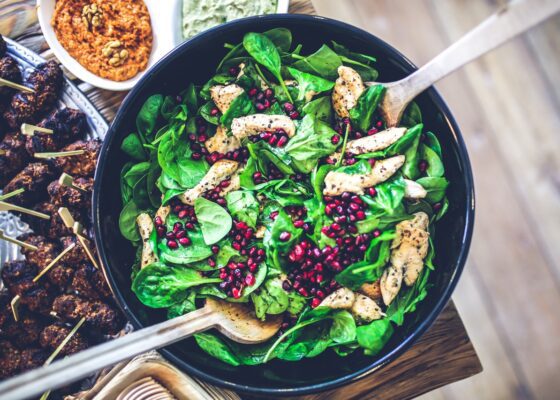
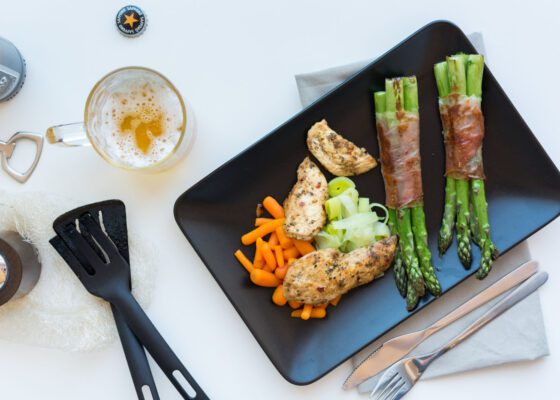
No Comments